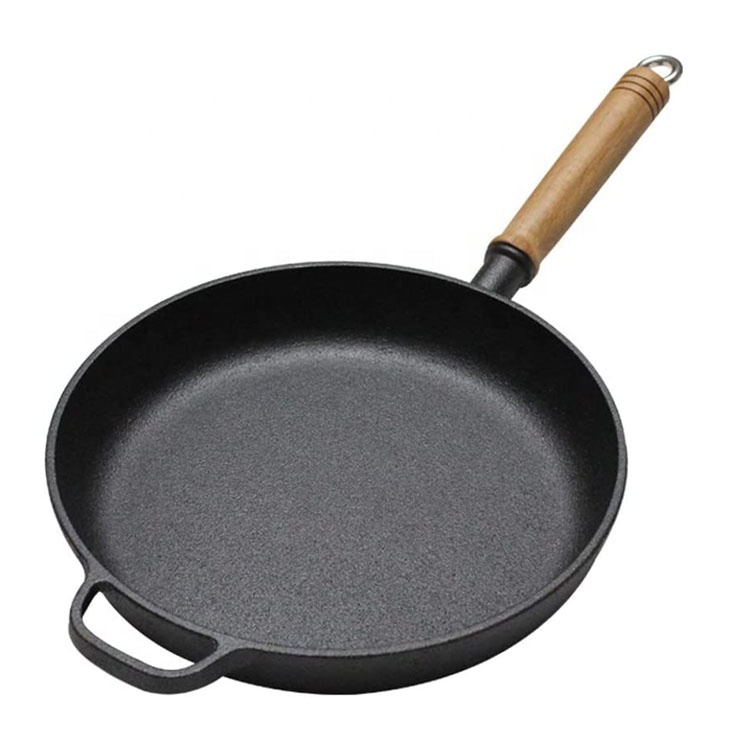
cast iron grill pan on glass top stove
The Use of Cast Iron Grill Pans on Glass Top Stoves Tips and Considerations
In recent years, the culinary world has seen a resurgence in the popularity of cast iron cookware. Renowned for its excellent heat retention and even cooking, a cast iron grill pan is a versatile addition to any kitchen. However, with the growing trend of glass top stoves, many home cooks are left wondering can they safely use their beloved cast iron grill pans on these modern surfaces? This article will navigate the considerations of using cast iron grill pans on glass top stoves and offer tips to enhance your cooking experience.
Understanding Glass Top Stoves
Glass top stoves, also known as smooth-top or ceramic cooktops, offer a sleek and easy-to-clean cooking surface. However, they require specific care due to their delicate nature. Unlike traditional gas or coil stoves, glass tops can be scratched or damaged by heavy cookware, especially if it has rough surfaces. As such, it’s important to choose your cookware wisely when cooking on these surfaces.
The Cast Iron Advantage
Cast iron cookware has been cherished for generations due to its exceptional properties. A cast iron grill pan can sear meats beautifully, create characteristic grill marks, and deliver a satisfying char. Furthermore, cast iron is virtually indestructible when properly maintained. Nevertheless, its weight and texture can pose challenges when used on glass top stoves.
Weight Considerations
One major consideration when using a cast iron grill pan on a glass top stove is its weight. Cast iron is notoriously heavy, which can pose a risk to glass tops. When handling your grill pan, it is crucial to lift and place it gently on the stove to avoid cracking or chipping the surface. Dragging the pan across the glass can cause scratches that will detract from the stove’s aesthetic and functionality.
Flat Bottoms are Essential
cast iron grill pan on glass top stove

To achieve optimal contact with the heat source, it’s best to use a cast iron grill pan that has a flat bottom. Many cast iron pans have a slightly uneven base, which can prevent good heat distribution and lead to cooking inconsistencies. When selecting a grill pan, inspect the bottom to ensure it is sufficiently flat to sit evenly on the stove. This will not only promote even cooking but also prevent potential damage to the glass top.
Heat Management
When using a cast iron grill pan on a glass top stove, it is important to pay attention to heat management. Since cast iron retains heat exceptionally well, you may find that you need to adjust your cooking temperatures. Start with lower heat settings and gradually increase as needed. This approach will help prevent overheating the glass surface and allow for better control over your cooking process.
Preventing Scratches
To minimize the risk of scratches, consider using a trivet or heat-resistant mat when moving your cast iron grill pan. Always lift the pan instead of sliding it and avoid stacking it on top of other cookware on the stove. Additionally, be mindful of any utensils you use; choosing wooden or silicone utensils can help avoid scratches that metal tools may cause.
Maintaining Your Cookware
Maintaining cast iron cookware is as important as how you use it. Seasoning the grill pan not only enhances its non-stick properties but also protects it from rust. After cooking, always clean your cast iron grill pan properly, avoid soaking it in water, and ensure it is thoroughly dried before storing.
Conclusion
Using a cast iron grill pan on a glass top stove can be a delightful addition to your culinary repertoire. By understanding the unique characteristics of your stove and cookware, you can enjoy the benefits of cast iron grilling while ensuring the longevity of your glass surface. With careful handling, attention to heat management, and proper maintenance, you can create delicious grilled meals, making the most of the best of both worlds in your kitchen. Enjoy the flavors of grilling indoors without compromising on your stove’s integrity!
-
Season Cast Iron Perfectly with GPT-4 Turbo TipsNewsAug.01,2025
-
High Quality Cast Iron Cookware - Baixiang County Zhongda MachineryNewsAug.01,2025
-
Premium Cast Iron Pan: Durable & Perfect HeatNewsAug.01,2025
-
High Quality Kitchen Durable Black Round Cast Iron Cookware Pancake Crepe Pan-Baixiang County Zhongda Machinery Manufacturing Co., Ltd.NewsAug.01,2025
-
Cast Iron Cookware - Baixiang County Zhongda Machinery | Nonstick, Heat ResistanceNewsAug.01,2025
-
High Quality Kitchen Durable Black Round Cast Iron Cookware - Baixiang County Zhongda Machinery | Non-Stick, Heat Retention, DurableNewsJul.31,2025


